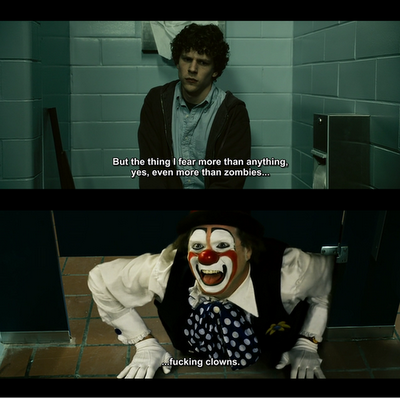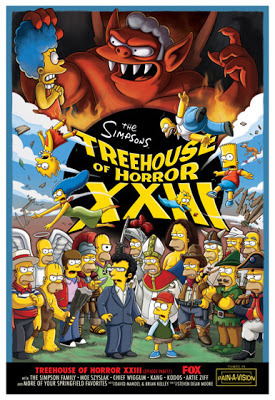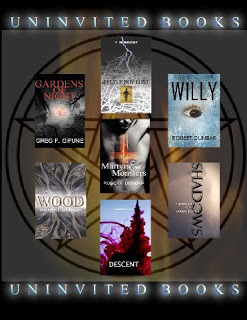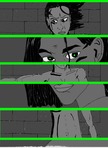M.R. Gott's Blog, page 19
October 24, 2012
Halloween Bash...Mystery, Suspense & Horror - Author Panel at the Hooksett Library in New Hampshir
Hooksett Public Library
Mystery, Suspense & Horror - Author Panel
Please join us for an opportunity to meet three local authors. Learn about their mystery, suspense & horror novels, in addition to their writing and publishing experiences . One lucky attendee will win a mystery door prize.The author panel includes:
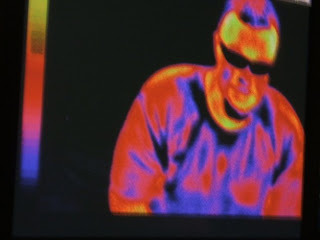 M.R. Gott, author of Where the Dead Fear to Tread (horror). To learn more about M.R. Gott please visit his website: wherethedeadfeartotread.blogspot.com/Richard Hatin, author of Evil Agreement (mystery & suspense). To learn more about Richard Hatin please visit his website: richardhatin.com/Joe Smiga, author of Gateway to Terror, (suspense). To learn more about Joe Smiga please visit his website: joesmiga.com/
M.R. Gott, author of Where the Dead Fear to Tread (horror). To learn more about M.R. Gott please visit his website: wherethedeadfeartotread.blogspot.com/Richard Hatin, author of Evil Agreement (mystery & suspense). To learn more about Richard Hatin please visit his website: richardhatin.com/Joe Smiga, author of Gateway to Terror, (suspense). To learn more about Joe Smiga please visit his website: joesmiga.com/Date:
Thursday Nov 1, 2012
Time:
6:30 PM - 8:00 PM
Contact:
Mathew Bose 603.485.6092 mbose@hooksettlibrary.org
Location:
Hebert Media Room
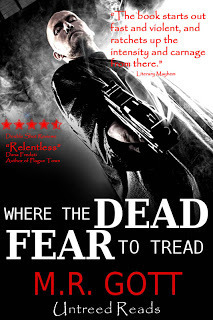
Published on October 24, 2012 13:34
THE JAKE HELMAN FILES: AFTERLIFE PROJECT
Here are the illustrations from THE JAKE HELMAN FILES: AFTERLIFE PROJECT, a free download which provides an overview of my supernatural action series The Jake Helman Files (Personal Demons, Desperate Souls, Cosmic Forces and Tortured Spirits), available as trade paperbacks, e-books, and audio books.
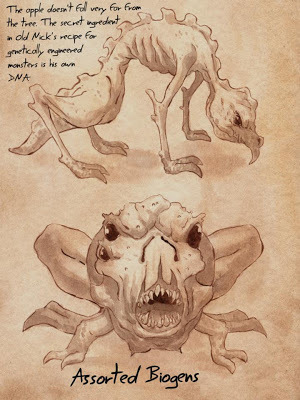
Click for more

Click for more
Published on October 24, 2012 13:15
October 23, 2012
Halloween Bash...Chuck Miller and Kolchak the Night Stalker
Please Welcome Chuck Miller as he recounts his memories of Kolchak the Night Stalker.
When I was a kid, the world seemed like a much safer place in some respects than it does now, and a wilder, more dangerous place in others. Things were magical in ways both good and bad. There was more delicious mystery than there is in the adult world. And television was much scarier-- in an oddly comforting way that I cannot define.
I grew up just outside Akron, Ohio. I was young enough that the legendary horror movie host Ghoulardi was slightly before my time, but I gorged myself on Hoolihan & Big Chuck and Ghoulardi's successor, the Ghoul, in the late 60s and early 70s. Horror movies made my nights a little uneasy, but I loved them. I knew there were no such things as monsters, but ghosts were another matter, and the monster movies always put me in mind of them. I knew I'd have to sweat it out later, but every Friday and Saturday night, there I was, in front of our old black and white set. It was something of a compulsion, I guess.
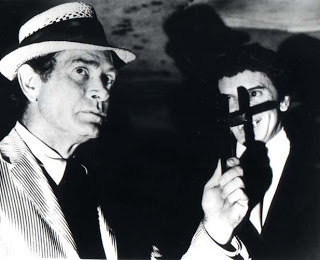
In 1974, a TV show came along that grabbed my imagination like nothing else ever had. After 38 years, that grip hasn't loosened all that much. On Friday, the 13th of September, the ABC network broadcast "The Ripper," the first episode of "Kolchak: The Night Stalker." There was something in that hour that resonated powerfully with the very young me. It starred Darren McGavin as Carl Kolchak, a rather down-at-heel Chicago crime reporter who often found himself in extraordinary situations.
The series was based on two very successful TV movies, "The Night Stalker" (1972) and "The Night Strangler" (1973). In the former, Kolchack faced off against a genuine vampire in Las Vegas; in the latter, a murderous alchemist in Seattle. The premise was intriguing: A hard-boiled crime reporter investigating a series of gruesome murders comes to realize that the killer is a genuine vampire. The execution was fantastic. It was the highest-rated TV movie of its day, and remains an undisputed classic. That success led first to a sequel, and then to a weekly series in which Kolchak ran up against one unexpected paranormal menace after another-- twenty in all.
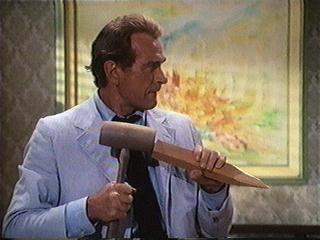
The show had its flaws. In fact, they were legion. So much of it was utterly absurd, the history and folklore completely fabricated. The first episode, "The Ripper," barely made any sense at all. The writers get it right when they say the original Jack the Ripper killed five women in London in 1888, but every other "fact" about the case is pure fairy dust. The nature of the Ripper himself-- exactly what kind of creature he is, how he has managed to live so long, and why he does what he does, is never revealed. Kolchak discovers that the Ripper is vulnerable to electricity, and that fact is never explained. Is this an example of a screenwriter maintaining an acceptable level of unsolved mystery, or is is mere laziness? There is an enormous pile of logical inconsistencies and unanswered questions.
The miraculous thing is, it doesn't matter at all. Not to me, anyhow. This slapdash approach might completely destroy my opinion of a lesser show, but it never diminished my enjoyment of Kolchak in the slightest. Not even after I-- as Carl might put it-- learned the true facts. Episode two, "The Zombie," was just as bad. The Voodoo ritual that summons up the zombie did not come from African or Haitian lore-- it came instead from the imagination of the writer. Consulting a text on genuine Voodoo practices wouldn't have been too onerous a task, surely-- but it was omitted in favor of an utterly ridiculous, completely made-up ritual. And yet.... It was effective in 1974, and remains so today. It is creepy rather than gory, nerve-wracking, funny and frightening at the same time. The third episode featured one or more invisible aliens who sucked blood marrow out of zoo animals (and people) and stole large quantities of lead ingots and stereo components. Once they completed their depredations, they departed earth in one of the clunkiest-looking flying saucers ever seen on the small screen. And yet...
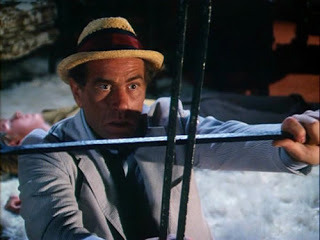
As a child, of course, I didn't see any of these flaws. Well, not all of them, anyhow, though the special effects were sometimes appalling enough to give me slight pause. But when I was a child-- one who in the very recent past had taken Adam West's Batman utterly seriously-- most of it went right over my head.
Now, as an adult, I see them clearly. And it doesn't matter one bit. I know everything that's wrong about it, but I can push my awareness to the rear for an hour. I'm very grateful for my ability to willingly suspend-- indeed, to willingly obliterate-- my disbelief. One of my favorite of the later episodes, "Chopper," featured a laughably phony-looking headless motorcyclist. It wouldn't fool a child. With today's CGI techniques, he would be more convincing, but he would also lose every bit of his strange charm.
The first four episodes, even with all their plot holes and absurdities, were the best of the twenty. After that, the quality was uneven, coming up short more often than not. The show was plagued by problems before it even began-- too many writers and producers that did not get along had been involved in the TV movies, and a few legal problems ensued. These issues were ironed out, but other problems continued as the series progressed. McGavin was unhappy with the "monster of the week" format and the increasingly-poor scripts. And yet...
The show worked, even when it shouldn't have.
The true appeal was the star, Darren McGavin, who was brilliant in spite of weak material and laughable special effects. His wonderful voice-overs have echoed in my head for decades.
McGavin's Carl Kolchak was a late 20th century refinement for the Heroic Ideal. Carl Kolchak was not a genius, but hwas clever. He was not fearless, but he had sufficient courage-- or maybe it was desperation-- to plow through his fear to do what had to be done to save his own neck, and quite a few others, too. He was a bad dresser. His seersucker suit and straw hat were all he ever wore. Did he own any other clothing? There is no evidence that he did. Where did he live? Nobody knows. We never saw his home. Did he even have one? Perhaps not. He was a reporter and nothing else. It was all he did, all he was. No personal life of any kind. No real past to speak of. No close friends-- just co-workers, associates and contacts, most of whom-- like morgue attendant Gordie "The Ghoul" Spangler-- were hustlers who drained his wallet in exchange for information. The only "family" he had consisted of the other employees of the Independent News Service office in Chicago: Editor Tony Vincenzo, the long-suffering father-figure; business reporter Ron Updyke, the prissy and annoying little brother; crossword puzzle maven Miss Emily (or Edith) Cowles, the dotty but loving aunt. This is all Kolchak seems to need.
Like most television programs in the 60s and 70s, Kolchak featured a parade of guest stars, well-known character actors of a type that no longer seems to exist: Scatman Crothers, Dick Van Patten, Jan Murray, Larry Storch, Jeanne Cooper, Alice Ghostley, Phil Silvers, Bernie Kopell, Marvin Miller, Jesse White, James Gregory, Hans Conried, Mary Wickes, Henry Jones, Carolyn Jones, Jackie Mason, Stella Stevens, David Doyle, Jim Backus, Kathleen Freeman, John Hoyt, Dwayne Hickman, Eric Braeden, Tom Skerritt, Erik Estrada, William Daniels, Jamie Farr, Pat Harrington, Jr., Larry Linville and Richard Kiel (In fact, Kiel-- better known as "Jaws" in the James Bond movies-- would play three different monsters in the series: the Rakshasa, the Diablero, and the slimy swamp thing Peremalfait), and many others. It can be a bit jarring to suddenly encounter a familiar face from some silly sitcom in a horror program. But, since the main element in any Kolchak story is incongruity-- things popping up in places where they should not be-- it works.
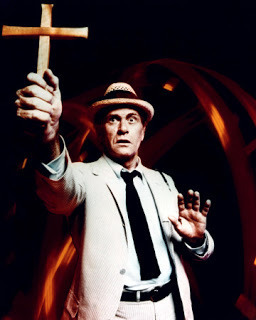
The show didn't last into a second season, but it is not forgotten. It has been embraced and cherished for many years by a small but extremely enthusiastic cult of fans. Why is this? What is it about Kolchak that keeps that magic going even now? It boils down to the character as portrayed by McGavin, of course. But why? What is it about him?
You wouldn't necessarily want to be Carl Kolchak. I did when I was ten years old, but I see him differently now. There wasn't much there to envy. He didn't conduct himself as a fearless, confident, utterly competent hero would. He stumbled and fumbled, he tripped and fell, he sought guidance from the unlikeliest characters, he often found himself totally at sea. He made missteps and came close to losing everything.
But he was dogged, he was persistent, and possibly a little too dumb or pigheaded to realize he was totally outclassed. So he always won. It's difficult to beat a man who has no idea he cannot possibly win. He dodged the police officers who were out to shut him down, using his native skill and moxie. He ferreted out the truth about the nightmarish creatures he engaged and he finished them off, one right after another.
In that respect, Kolchak is the sort of person you might aspire to being. But, the thing is... you might already be him. Aspirations were unnecessary. Kolchak wasyou, thrown into circumstances more extraordinary than any you have ever imagined. He had to sink or swim, and-- against all odds-- he swam. It was always by the skin of his teeth, but he prevailed. He's a sort of Everyman, far from perfect on any level. Warts and all, he is just like us.
Like most of us, Carl was not a "monster hunter." He never looked to get in over his head. Unlike Fox Mulder of "The X-Files," or any of his other spiritual descendants, Kolchak never set out to find and destroy a supernatural horror. (The sole exception being the fourth episode, "The Vampire," a sort of sequel to the first movie.) But anything he investigated could-- and did-- lead him there against his will, time and time again. An investigation of espionage in the fashion industry uncovers a malevolent witch. A human-interest piece on a singles cruise brings him face-to-snout with a seagoing werewolf.
Now, it seems to me that there are three rather different and distinct Kolchaks. There is the Kolchak of the first movie, "The Night Stalker." He is somewhat seedy. He drinks. He has a girlfriend who works in a Las Vegas casino. He has been in trouble in the past, having done his career a near-fatal injury in New York-- a milieu to which he desperately wants to return in triumph. He believes his victory over the vampire, Janos Skorzeny, will bring about this devoutly wished consummation. Of course, it does not. He figured it out when the police could not. He cut a deal with them. In return for his help in finding the killer, they would allow him to publish the exclusive story. He holds up his end of the bargain and prepares for his glorious transformation, from has-been reporter to journalistic star.
But his trust in the Las Vegas law enforcement community proves to be tragically misplaced. After he kills the vampire, Kolchak is betrayed, threatened, and run out of town. His job and his girlfriend are both gone in an instant. And that's the kind of place we've all been to, in one way or another, to one degree or another. An already dark and cynical character is given ample reason to become even darker and more cynical.
The Kolchak of the second movie, "The Night Strangler," does not quite live up to this dark promise. Carl is still edgy, but his edge is mysteriously blunted. He is less three-dimensional than his predecessor and more whimsical. The tone is lighter, there is more humor. He is not what I would have expected from the man last seen in the final moments of "The Night Stalker." And he finds himself surrounded by oddball characters. Guest stars Margaret Hamilton and Al Lewis provide amusing echoes of their earlier screen personas, the Wicked Witch of the West and Grandpa Munster. The ending is practically slapstick, more suited to an episode of "Three's Company" than a horror movie. And yet...
The third Carl Kolchak, the one from the short-lived TV series, was in many ways more of a caricature than character, almost a cartoon. TV Carl is, strangely, both more innocent and more resigned to the wicked ways of the world in which he lives. And this wickedness has nothing to do with supernatural menaces. He knows that his real enemies have always been officialdom and his superiors in the newspaper business. He seems to have internalized that lesson while somehow jettisoning most of his personal angst.
The Kolchak of the TV series knows he will not win favor with his bosses or with the authorities for exposing and exterminating supernatural menaces. In this, he is much wiser than his seemingly-more-worldly earlier incarnation. He knows Vincenzo will never believe his stories, much less publish them. He knows that law enforcement will not lionize him for destroying a murderous creature from the Beyond that has run rings around them. He has a brash, almost childlike disregard for authority of every kind. He gleefully needles the police and torments his boss. He almost never becomes angry. He seldom has allies-- only people he manipulates into helping him in spite of themselves. Virtually nobody believes anything he says. He knows this, and knows that it's hopeless to try to convince the non-believers, but he never stops trying. In the end, he stands alone. So it has always been, so it will always be.
And these things do not seem to matter to him. He knows he will stand alone in the end, as always. Unlike the Kolchak from the first movie, the TV incarnation is strangely selfless. In many cases, he is not personally threatened. He could walk away from the story and avoid risking his own life. But he never does.
When this Kolchak sets out to kill a monster, the personal ambition and desire for recognition that motivated him in Las Vegas are absent. He's just doing his job now. The job description does not include supernatural monsters, but when they appear, Carl copes beautifully. And don't all of wish we could do that with our own "monsters," whatever they might be? Wouldn't we love to defeat them just as we are, all by our non-heroic selves? We are not ruggedly handsome, we are not at the peak of whatever profession we are in, we very seldom get the girl, and almost never get the glory.
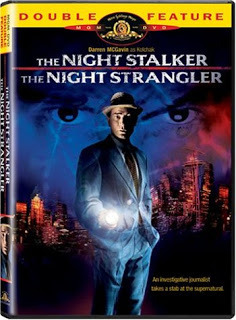
Kolchak is us, and that never changes. And the Kolchak motto, if he has one, must be, "Never let the bastards grind you down." No matter who they are or which side of the Great Divide they hail from. Maybe Carl can't get ahead in life, but he'll be damned if he's going to be pushed backward. He refuses to be helpless, even in the face of an unimaginable threat. This is the quality that all three Kolchaks have in common, and the one we all want to share.
Whether we are ten years old or fifty, we recognize this hapless kindred spirit. Against any opposition, against logic itself, he prevails every time. He remains a schmuck-- just like most of us.
And if he can do it, so can we.
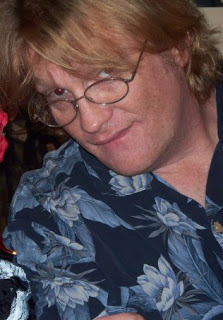 Click For All of Chuck's Books
Click For All of Chuck's BooksChuck Miller was born in Ohio, lived in Alabama for many years, and now resides in Norman, Oklahoma, for reasons best left to the imagination. He is a Libra whose interests include monster movies, comic books, music and writing. He holds a BA in creative writing from the University of South Alabama.He is the creator/writer of TALES OF THE BLACK CENTIPEDE, THE INCREDIBLE ADVENTURES OF VIONNA VALIS AND MARY JANE KELLY, THE BAY PHANTOM CHRONICLES, and THE MYSTIC FILES OF DOCTOR UNKNOWN JUNIOR. He has also written stories featuring such classic characters as Jill Trent: Science Sleuth, Armless O'Neil, The Griffon, and others.
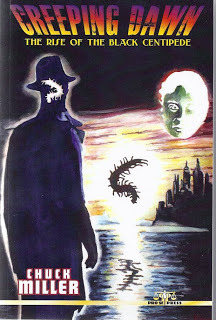 Click to buy
Click to buyMiller recently received the BEST NEW WRITER OF 2011 Award from Pulp Ark. His first novel, the critically acclaimed "Creeping Dawn: The Rise of the Black Centipede" was published in September by Pro Se Press. The second installment in the Black Centipede series, "Blood of the Centipede" is forthcoming."The Black Centipede and related characters are part of a grand concept I came up with myself and started writing and publishing on the web," says Miller. They had actually been festering in my skull for more than 20 years-- a proposed comic book that never made it off the ground-- and it seemed about time to let them out."
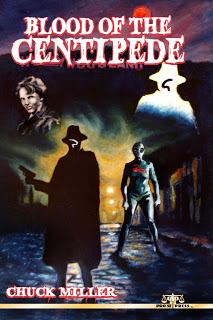 Click To Buy
Click To Buy
Published on October 23, 2012 16:34
October 21, 2012
Halloween Bash...Robert Dunbar and the Season of the Witch
Robert Dunbar an incredibly unique voice in the horror genre shares his thoughts on Halloween
“Must be the season of the witch.”~ Donavan Leitch
Wise up. It’s not about the candy corn. Halloween is as political as a brick through the windshield of a cop car. We have always been at war. First the Romans marched, then authoritarian religious armies – pious and intolerant – slaughtered, burned, and assimilated in their footsteps. What else could you call it but war? Adherents may have been tortured and maimed. Priestesses may have been put to the sword and temples sacked. But the old beliefs won’t stay buried. Even now, they lurk just beneath the sanitized, homogenized surface, ready to claw their way up. Once a year, the prevailing culture acknowledges this fact … without ever admitting what it is that’s being acknowledged. Neat trick. Never mind. The wild grace does not fade. Jack-o-lanterns still burn as brightly as any heretic. Hags cackle, and skeletons cavort. But don’t be afraid. It’s all in fun. Isn’t it? Listen for the cries of “Satanism!” According to so many sectors of the community, this day represents a challenge, even an outrage. In many circles, Halloween is still referred to as “the gay holiday,” and this alone offers effrontery to the status quo. Dissidents have perished on the rack for less. Much less. This is not just war. It’s history. And which side writes the history books? The name Halloween is a corruption of All Hallows Eve, one of many calendar events grafted onto pagan celebrations, in this case Samhain. (Doesn’t it always come down to power? Stealing the old gods and turning them into saints and angels, even erecting shrines to them, has proved to be an excellent means of establishing control.) Wiccans still consider Samhain – the day when the spirit world and the mortal world make contact – the highest of holy days. As celebrated in the queer world, Halloweenbecomes a transgressive festival: flagrantly unorthodox, a night of revels for the most marginally accepted (and often brutally oppressed) citizens. All Hallows Eve leads into All Saints Day – a cattle call of mythological personae, traditionally including figures like Saint Demetra and Saint Mercurius, supposed martyrs adapted from the Roman gods Demeter and Mercury, themselves based on the Greek gods Ceres and Hermes. This list includes Saint George (and his dragon), Saint Christopher (a giant), and Saint Valentine (Cupid/Eros) as well as celestial hosts of others, so many in fact that early Protestant reformers could attack All Hallows Eve for being both Pagan and Papist. Another neat trick. Then as now, propaganda and superstition remain potent weapons. Witches rarely burned alone, and never because they possessed magical powers. (The very word “faggot” refers to kindling.) However meager their possessions, every heretic rendered to ash owned something to be commandeered by church and state. If one sought true cause for outrage, one need look no further. And the war never ends. Bats flap. Phantoms moan. No, it’s not about the candy corn. Everything is politics. It’s all about power. And the battle is mostly fought with differentweapons now. (Voter suppression, anyone?) This Halloween take a stand, and do something revolutionary. Heave a brick for all of us. Just be sure to wear a mask.
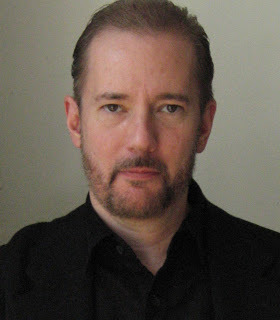 ROBERT DUNBAR is the author of the novels THE PINES and THE SHORE and WILLY, the novella WOOD and the short story collection MARTYRS & MONSTERS. He was also the editor for the anthology SHADOWS, SUPERNATURAL TALES BY MASTERS OF MODERN LITERATURE. Dunbar's books have been extremely well-received by the critics, and he's been called "the catalyst for the new literary movement in horror." Yet dark literature has only recently become the principal focus of Dunbar's career. Both his mainstream fiction and his poetry have appeared in respected literary journals, and several of his plays have been produced. Dunbar has also written for television and has appeared as a guest on a variety of programs. For more information, visit his site at www.DunbarAuthor.com.Praise for books by Robert Dunbar:
ROBERT DUNBAR is the author of the novels THE PINES and THE SHORE and WILLY, the novella WOOD and the short story collection MARTYRS & MONSTERS. He was also the editor for the anthology SHADOWS, SUPERNATURAL TALES BY MASTERS OF MODERN LITERATURE. Dunbar's books have been extremely well-received by the critics, and he's been called "the catalyst for the new literary movement in horror." Yet dark literature has only recently become the principal focus of Dunbar's career. Both his mainstream fiction and his poetry have appeared in respected literary journals, and several of his plays have been produced. Dunbar has also written for television and has appeared as a guest on a variety of programs. For more information, visit his site at www.DunbarAuthor.com.Praise for books by Robert Dunbar:
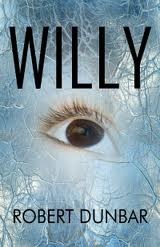
WILLY"Unique ... highly recommended."
~ Midwest Book Review"A tour-de-force."
~ Shroud Magazine"Powerful."
~ Dark Scribe Magazine
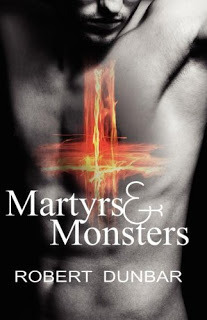
MARTYRS & MONSTERS"Impressive ... completely and utterly engrossing."
~ The Lambda Literary Foundation"Substantial amounts of panache and poetic insight."
~ Cemetery Dance Magazine"Sure to satisfy lovers of both horror and literary fiction."
~ Shroud Magazine
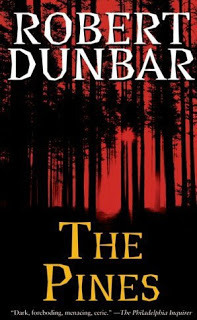
THE PINES"Not only a superb thriller but a masterpiece of literature."
~ Delaware Valley Magazine
"Dark, foreboding, menacing, eerie ... seductive."
~ The Philadelphia Inquirer"This is the way great horror should be written."
~ Hellnotes
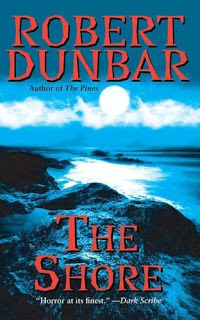
THE SHORE"Intense and wholly original."
~ Dark Scribe Magazine"An instant classic."
~ Nights & Weekends"Literary and atmospheric ... be prepared to be entertained."
~ Horror World
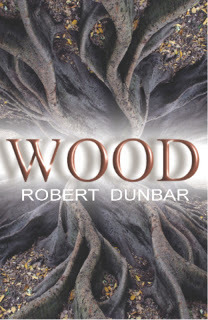
WOOD"Literary horror at its best."
~ LAYERS OF THOUGHT"Mesmerizing ... unnerving."
~ LITERARY MAYHEM"A dark literary masterpiece."
~ FAMOUS MONSTERS OF FILMLAND"Honest-to-God terrifying."
~ HORROR WORLD~In Wood Robert Dunabr has creates an eerie setting that you can almost reach out and touch populated by well-constructed characters and events. While the creature reveal didn’t work for me personally I would still recommend this novella. ~M.R. Gott
Published on October 21, 2012 15:56
Halloween Bash...With Reed Rothchild...Sitcoms are worse than Ke$ha.
Sitcoms are worse than Ke$ha.
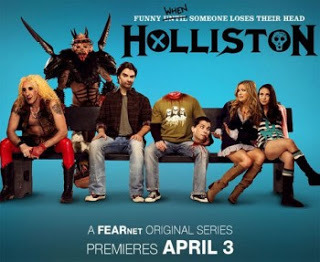 Click Here for Full Review
Click Here for Full Review...this show just sucks hard. It's about two friends who live in Holliston, Ma and host a horror review cable access show. The only horror aspects of the show are their reviews of fake films and the occasional appearance by a B horror movie star that shows up in a random Family Guy style flashback or dream sequence. The show is more or less a shitty sitcom complete with a laugh track and the main character (Adam) pining over his high school girlfriend. I don't think I laughed once and all of the gore dream sequences sucked hard. The special effects were awful, but not so awful they were good. Dee Snider as their boss at the station was a nice touch and Oderus from Gwar's appearance was pretty cool, but otherwise this was the longest 40 minutes of television I've sat through in a long time.
Funny or Scary: Neither, but boy does it try to be!
Funniest Scene: When Oderus Urungus shows up, not because the scene was particularly good, but because it reminded me of jamming out to Gwar cd's in like 8th grade that me and my friend John got for free from Columbia House.
Overall Corpse Rating: 3 bored as shit corpses.
Published on October 21, 2012 09:55
Fucking Clowns
Published on October 21, 2012 07:23
October 20, 2012
Halloween Bash...TreeHouse of Horror XXIII
Published on October 20, 2012 10:41
October 16, 2012
Halloween Bash...John Everson and The Seduction of Horror Film… Unchained.
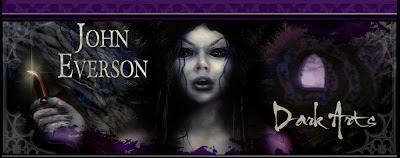
The Seduction of Horror Film… Unchained.By John Everson
I am a Eurotrash film fanatic.There. I've said it. I've confessed. Give me '70s horror/exploitation films from Italy and France… or give me death. You can quote me on that. You want to talk Dario Argento, Lucio Fulci, Mario Bava, Jean Rollin, Jess Franco, Harry Kumel, José Ramón Larraz? I'm your guy. Come into my basement, won't you?Be careful. This could be you someday.
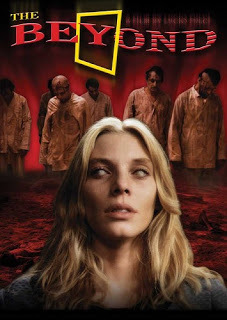
Maybe it starts innocently with the Universal Frankenstein or Dracula. Maybe it grows up with you, and progresses through the Hammer Films versions of the same names. Maybe it is still with you as an adult, and wades through 30 years of Hollywood generic trash only to finally realize that the best films are often those made on a low budget with only half-believable effects - but they work and engage the viewer because they were made from the heart. By people who truly believed in their art and vision.What is that "it" I'm talking about? I don't know, exactly. But "it" started out for me as the side of my brain that loved the strange, the unconventional, the gothic. It is a love of the thrill of spookiness. Of the romance of dark castles and the promise of everlasting life… or not-life (sometimes called, the undead). "It" is the thrill of encountering the unknown.As a horror author, everyone asks me why? Why do you like horror? Why do you want to see skulls and monsters and things that are creepy and dangerous?I don't know, really. It's not like I want to die. It's not like I'm fascinated with pain or blood; heck, I've gotten faint a couple times when I got a bad cut and saw it running down my leg. Still, I am always drawn to the thrill provided by the macabre. I blame the stories I read as a kid by Roald Dahl. And Richard Matheson. I blame "Twilight Zone," and "The Outer Limits," "One Step Beyond" and especially "Creature Features." When I was a kid, we had "Creature Features" in Chicago, a TV show on the weekends that showed all the old black and white monster movies. I loved them. The fuzzy grey backdrops of all those castles and crypts? They were exotic and beautiful to me. Strange beauty. The worlds of monster movies to me were a portal to places far outside of my dull life -- places where the unusual could happen. Where magic was possible. I think I grew up to love horror (supernatural and monster horror, not serial killer stuff, which is kind of mundane and “real”) because it really hinges on the idea that there is something more beyond this. It says that the gutters in the street may lead to a secret necropolis where strange creatures live. It says that the crypts beneath the old church may hold some bizarre spark of life from another eon yet. The idea that there is more to this world than the pedestrian is like a drug to me.
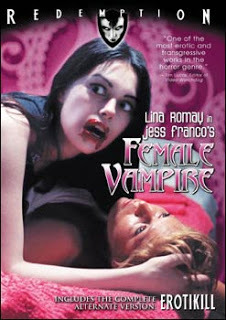
I love horror – especially non-pedestrian horror -- because it promises that life may be more than going to work in an office Monday-Friday and cutting the grass on Saturday. That an entire other world may exist of spells and magic and creatures. Who wouldn't like to have a witch living in an old tilted house at the end of their subdivision? Sure, it would bring a tinge of danger to your everyday life… but it would bring magic too. And what good is magic without a little danger in it, to spark things up a little?That's the appeal of horror and Halloween… the patron day of horror. I watch horror movies all year long, but October is naturally, my favorite season. Haunted houses and creepy decor abound and spook stories are everywhere. Halloween is like most people’s Christmas to me.I watched the Universal and Hammer horror films growing up, and then spent quite a few years watching the horror films of Hollywood in the '90s. After awhile… I grew immune to them. They were predictable, every one feeling the same. Those sharp, shock surprises, were no surprise. In the modern age, we've really lost the ability to create "lurid" masterpieces that really build on mood.And so I started looking elsewhere for my horror fix. (This is all a really long way of getting back to my thesis by the way. Don't worry… we're getting closer).The horror films of the '60s were mired in a fear of the effects of science (radioactively mutated bugs, women, gila monsters, blobs from outer space…) but they managed to maintain a sense of wonder that was entrancing. I loved watching those films as a kid. As an adult though, ultimately, I craved something more.Horror through the '70s maintained some of that sense of wonder, but it diverged down two paths that were definitely NOT for kids. One was the Texas Chainsaw Massacre style brutal stalker horror film. The other I find more interesting, since it tends to maintain a connection with the supernatural. With the changing acceptance of nudity in film, the "naiveté" of radioactive monster horror movies dissolved and an era of "exploitation" cinema began. There were vampires and ghouls and witchcraft and there was also… sexuality. Sexploitation, nunsploitation, and a torrent of Satanic and vampiric movies (filled with wanton flesh and Bacchanalian rituals that could never have been previously filmed) began cropping up. Girls have been showing their boobs in horror movies for decades now, but those first few years when filmmakers around the world realized they could truly create a Satanic orgy on screen, or really sexy vampires and actually release flesh in their films… everything changed. There is an enthusiastic exhibitionist energy about those 1970’s horror/exploitation movies that you just don't find in the films made today. No matter how "out there" modern filmmakers are, they still ultimately tend to show more restraint than some of the horror films of the mid-'70s. Obviously none of this impacted me at the time that it was being made – I was like, 10! I was there… but I wasn’t.
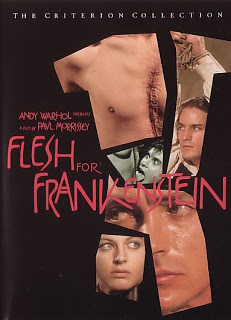
I grew up in the '70s, and never saw these films until I was in my 30s and 40s, after being jaded on the films of the '80s and '90s. And while the production values are often poor, and the acting frequently questionable, the directors and writers back then were not held in by boundaries. They experimented with light and music and sexuality in a way filmmakers today almost never do. The '70s were a period in filmmaking that is really fascinating to watch for its explosion of excess, and the filmmakers of Europe were even more unfettered than their American compatriots.Almost ten years ago, I was doing occasional DVD reviews for the newspaper I worked for, and I received a 3-DVD box set called The Vampire Box. Image had put it together in combination with England's Salvation/Redemption Films. It was comprised of the sensual vampire movies of Jean Rollin, a French filmmaker who gained renown in the '70s and '80s. Rollin's camera is a sensually poetic one; he loved capturing the female form, and had an obsession in all of his films with the bond between two women. Shot against backdrops of real French castles and cemeteries, all of his films feel like strange fever dreams to the modern viewer. Sometimes clumsy, always strange… they were my introduction to European horror and exploitation films. And since then, I've discovered a wealth of other strange productions along the way. Ramaz' Vampyres is one of the sexiest, evocative vampire movies ever filmed, and it's paired on some releases with Daughters of Darkness, an almost "cold" erotic horror movie that updates the Countess Bathory story.
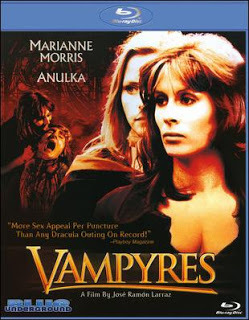
Then there are the late '70s Dario Argento horror films, which focus on color and blood and gloved killers. I'm not usually a fan of the serial killer genre, but Argento's films drew me in, especially when he deals more with the supernatural, as in Suspiria, or the psychic bug-driven plot of Phenomenon. How about Lucio Fulci, who's known for his Zombie 2 color reprisal of Night of the Living Dead, but made a film called The Beyond that literally uncaps the doorway to hell?You have to see these movies if you are really a horror fan. They are all flawed. And yet, they are in so many ways so much more interesting than the latest paint-by-number effects-laden mousetraps that Hollywood produces.So in some ways… I guess as I’m aging, I'm doomed to rediscovering the past. My own past. And the past has certainly influenced my writing along the way. I wrote The 13th after about a six-month stretch of constantly watching Euro-horror films. And I tried to approach my new novel, NightWherewith the kind of manic abandon that some of my favorite crazy old films displayed.
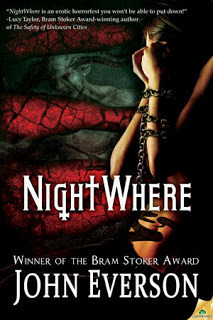
My biggest fear now? There were only so many movies shot in the '70s, no matter how obscure. And with every over-the-top "I can't believe they did that" movie that I discover from the dust bins of Eurotrash… I worry that that is the last one of its kind that I haven’t already seen.Luckily, so far, I keep stumbling on one more. And one more. The good thing is, I have a horrible memory, so by the time I've mined it out and watched all the Eurosleaze treasure there is to find… I guess I'll be able to just start over!My assignment for you? This Halloween, if you've not seen a Rollin or Fulci or Franco… seek some of the following list out. Kick back with a beer or a bourbon in a dark room, put your mind on hold, and prepare yourself for a trip through the surreal, sometimes seedy celluloid past when all the bonds came off. And please, watch them subtitled where appropriate. Hear the soundtrack and actors’ voices as they were meant to be heard, not embarrassing dubs. So here is my list for you to get you started -- 10 films from 5 directors, none of which are too hard to find, but provide a good entree into the world of Eurotrash horror. You can even find some of them on Blu-Ray now:
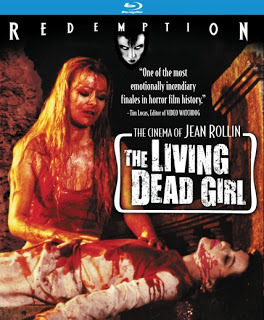
1. Jean Rollin - Living Dead Girl or Fascination2. Lucio Fulci - The Beyond or House by the Cemetery3. Jess Franco -- Female Vampire or A Virgin Among the Living Dead4. José Ramón Larraz -- Vampyres or Black Candles5. Paul Morrissey -- Flesh for Frankensteinor Blood for Dracula
Dark, twisted dreams.John
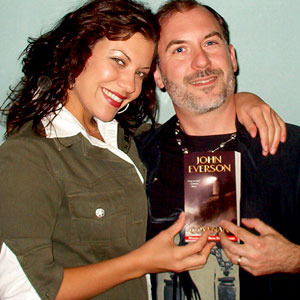
John Everson is the Bram Stoker Award-winning author of the horror novel COVENANT, as well as its sequel SACRIFICE and the novels THE 13TH, SIREN, THE PUMPKIN MAN and NIGHTWHERE. He has also written several horror/dark fantasy short story collections, as well as a heartwarming collection of CHRISTMAS TALES for the whole family, and a short book for 5-8-year-olds called PETEYBOO AND THE WORM.John shares a deep purple den in Naperville, Illinois with a cockatoo and cockatiel, a disparate collection of fake skulls, twisted skeletal fairies, Alan Clark illustrations and a large stuffed Eeyore. There's also a mounted Chinese fowling spider named Stoker, an ever-growing shelf of custom mix CDs and an acoustic guitar that he can't really play but that his son likes to hear him beat on anyway. Sometimes his wife is surprised to find him shuffling through more public areas of the house, but it's usually only to brew another cup of coffee. In order to avoid the onerous task of writing, he occasionally records pop-rock songs in a hidden home studio, experiments with the insatiable culinary joys of the jalapeno, designs book covers for a variety of small presses, loses hours in expanding an array of gardens and chases frequent excursions into the bizarre visual headspace of '70s euro-horror DVDs with a shot of Makers Mark and a tall glass of Newcastle.
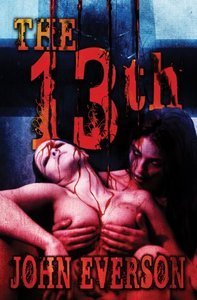
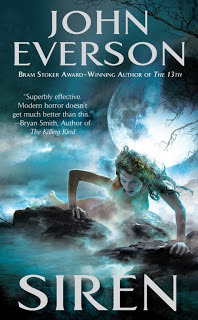
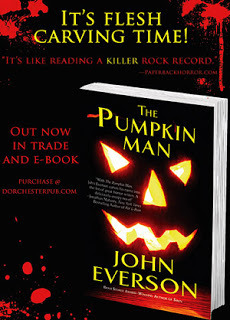
Published on October 16, 2012 16:49
October 14, 2012
Halloween Bash...Troy McCombs shares make up tips
Please Welcome Troy McCombs
Halloween: the time of the year when the leaves change color, die, fall to the ground, and give off that distinct smell that foretells the coming of a new season. Halloween: the time of year when we trick people and treat ourselves to buckets of sugary, teeth-rotting candy. Halloween: the only time of the year when we can dress up, become someone else, and try to scare the crap out of each other for a good laugh.I’ve always been fond of this holiday. At an early age, I decorated my porch with leaf-filled dummies, threw masks over the neck cavities, and angered my mom when I doused everything in too much blood. I never used that cheap vampire blood in the squeeze bottles, either. I used Stage Blood--it tastes like sugar and looks very real. I purchased this out of special-effects catalogues before there were many Halloween stores. None of it ever went to waste. I used it excessively in short films and simple video clips to see how many people I could gross out. When I was 15 or 16, and learned how to make it, I once filled a garbage can with water and added LOTS of food coloring. My friends and I would fill syringes with this stuff and squirt the gore everywhere.Fun times.
HOW TO MAKE STAGE BLOOD: Needs:1. Clear Karo Corn Syrup2. Large bottle of red food coloring3. Small bottle of blue food coloring1. Pour the Karo into a bowl.2. Add as much red as you can. Depending on how much corn syrup you use depends on the food coloring. I always used to get just the quart-size bottle of Karo, a tiny drip bottle of red and a larger pour-bottle of red (the one that comes packaged alone). 3. After saturating the Karo with red, mix well with a spoon. Then add blue--you’ll only need a few drops of this. Without blue, the blood will look too red and unrealistic. 4. Add blue and mix until it looks right. You may have to dip your fingers in it and rub it to check color. If it’s pink or blue or purple, add more red.Remember: lots of red, little blue.Lastly, you can add some water to thin it down, and, if you like, put some mouthwash in it to give it taste.
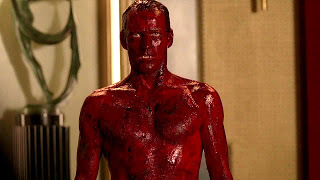
HOW TO MAKE A REALISTIC CUT USING SKIN WAX (nose putty)1. Buy skin wax putty--not the stuff with the cotton in it.2. Roll into worm, and apply to where you want it.3. Smooth in using Vaseline as a lubricant to keep it from sticking and gumming up.Note: smoothing is the longest process.4. Next, get something dull (a butter knife or such) and use the dull end to make a gash.5. Gently apply proper skin color to match your tone. 6. Then, just add blood!
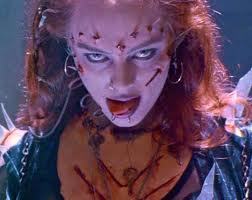
Have fun this Halloween season! Just make sure you don’t scare anyone who’s too old! Pick out a good costume, mask, and become somebody else! Trick or Treat!

Ever since Troy’s third grade teacher made him write a short story for class credit, He was hooked to the art of writing. Creating and designing worlds that don't exist, and populating those worlds with interesting and unusual characters, is what he does best.
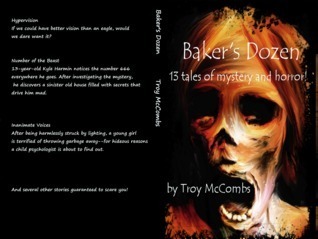
If you read work by Stephen King and H.P. Lovecraft (his favorite author), then you've definitely come to the right place! He also has some coming-of-age stories as well (The Graveyard; The Black Place Inside; The Music of 1997).
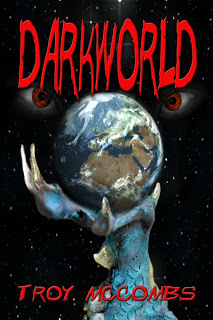
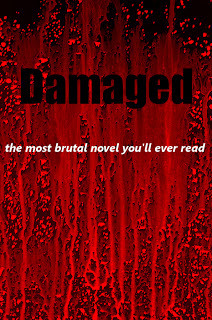
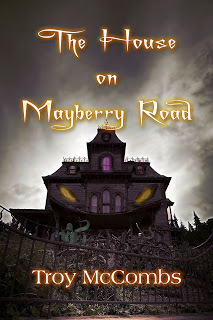
Published on October 14, 2012 11:55
October 12, 2012
Halloween Bash...Uninvited Book Sale
Published on October 12, 2012 14:14

